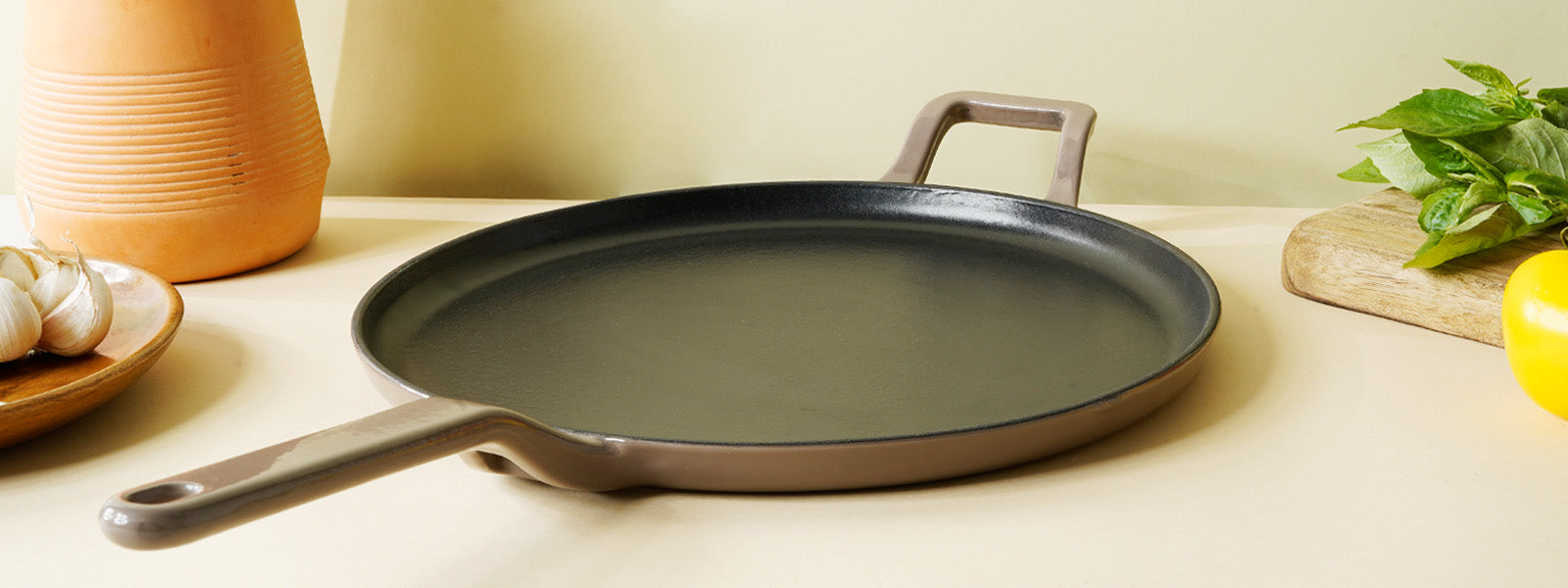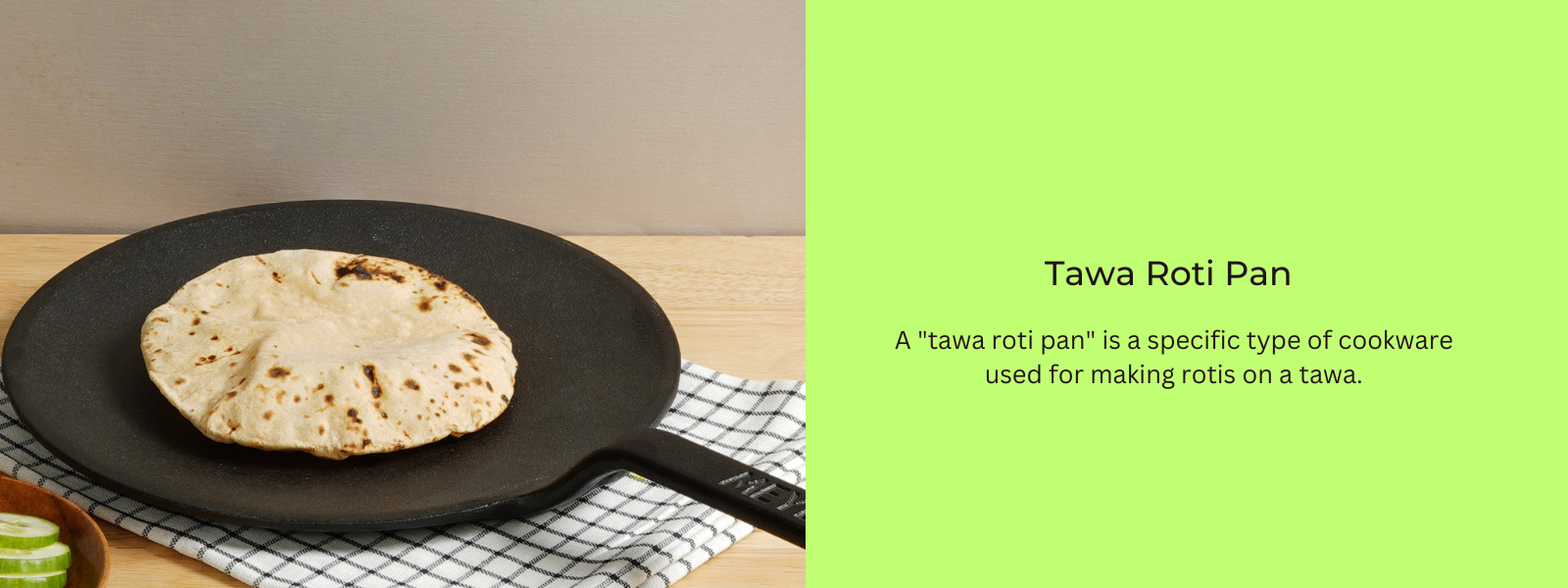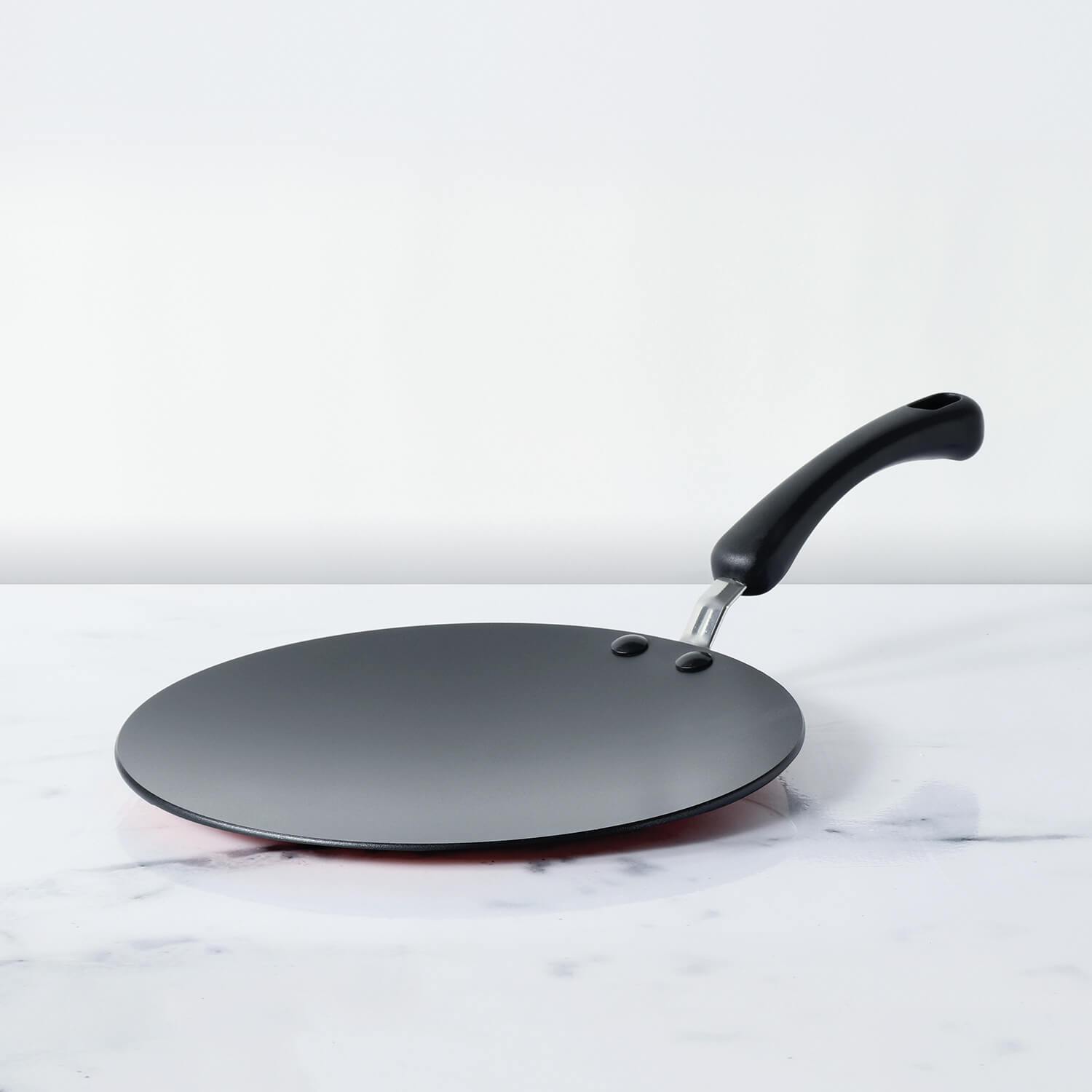In Indian cooking, a "roti ka tawa" holds significant importance as it plays a crucial role in preparing various types of flatbreads, especially rotis (also known as chapatis). Rotis are a staple in Indian cuisine, and a tawa is an essential tool used to cook them
When searching for roti ka tawa or simply roti tawa to make roti, you should think about a number of different factors, including how the heat is distributed, how easy it is to maintain, how much it weighs, and how well it works with your cooking hob.
Table of Contents
What is Roti Ka Tawa?
Roti ka tawa or roti tawa is considered to be a key cookware in the Indian kitchen that is required to cook staple Indian food, roti. The term "roti" refers to a classic type of flatbread that is produced from whole wheat flour. Rotis are a staple food in many Indian households and are typically served alongside a selection of curry dishes, vegetables, lentils, or yoghurt as part of the day's regular fare. To get the finest results while cooking roti, you need to have the best roti ka tawa possible. This is because cooking roti occurs virtually every day.
Key Factors To Consider While Buying Roti Ka Tawa:
There are a number of aspects to think about before settling on the tawa that would produce the best roti for you. The following are some significant alternatives to consider:
Cast Iron Tawa: Many users think that cast iron is the best roti ka tawa because of its great heat retention and equal heat distribution. Cast iron is noted for being one of the most durable cookware materials. A tawa made of cast iron can maintain an even heat, which is essential for cooking rotis to perfection. It is possible that some initial seasoning and upkeep will be required, but if it is properly cared for, it can survive for generations.
Non-Stick Tawa: Coated tawas are widely regarded as the superior choice for cooking roti. Because it takes less oil or ghee, using it to make rotis is both practical and convenient. You should look for a non-stick coating that is of high quality and can resist high temperatures without becoming peeled off.
Hard-Anodized Tawa: The hard-anodized tawa is without a doubt the best roti ka tawa because the aluminium tawa is lightweight and provides outstanding heat conduction. A hard-anodized tawa has a cookware surface that does not adhere to food, is scratch-resistant, and is long-lasting. To avoid the roti ka tawa from becoming warped, check that the base of the tawa is sufficiently stable.
Stainless Steel Tawa: Many people believe that roti ka tawa made of stainless steel is the ideal tawa for making roti. It can withstand wear and tear, is simple to clean, and conducts heat effectively. Try to find a tawa made of heavy-bottomed stainless steel if you want it to retain heat more effectively.
Comparison of Roti Tawa Made of Hard Anodized Steel and Stainless Steel:
Stainless steel and hard-anodized roti tawas each have their own set of benefits and points to think about when using them. The following is a thorough guide to assist you in selecting the most appropriate tawa for cooking roti:
Stainless steel roti ka tawa:
Stainless steel tawas are noted for their endurance and resistance to corrosion, making them an excellent choice for cookware.
In addition to creating rotis, the versatility of stainless steel tawas allows them to be used for a variety of other cooking purposes.
They are compatible with both induction and gas cooktops, making them a versatile option. Stainless steel is easier to maintain and handle than other types of metals, particularly in comparison.
However, unless the base of the tawa is layered or the tawa was created expressly for producing rotis, it is possible that the tawa will not distribute heat uniformly, which will result in rotis that are cooked unevenly.Because stainless steel tawas have a tendency to cause food to stick, you might find that you need to use additional oil or ghee than usual in order to keep your food from becoming stuck.
Hard-Anodized Roti Ka Tawa:
In comparison to roti ka tawa made of stainless steel or cast iron, hard-anodized tawas often weigh less. This type of roti ka tawa gives good heat distribution, which ensures that the rotis will be cooked evenly. They have excellent heat conduction.
Durable and resistant to scratches, the hard-anodized coating offers a surface that is both of these qualities. They are often simple to clean and maintain, making them an appealing option.Hard-anodized tawas are compatible with both induction and gas cooktops, allowing for maximum versatility in the kitchen.











Leave a comment